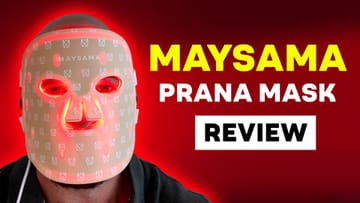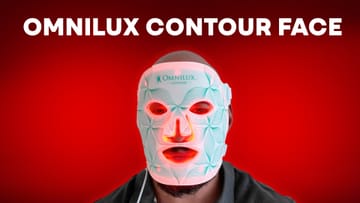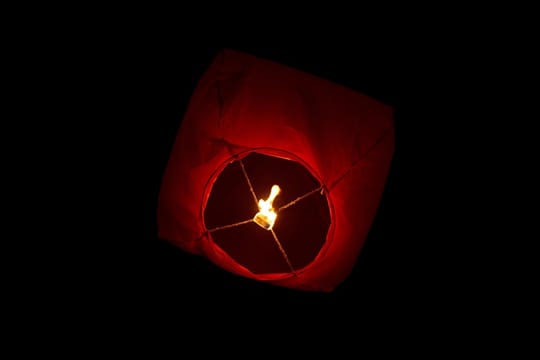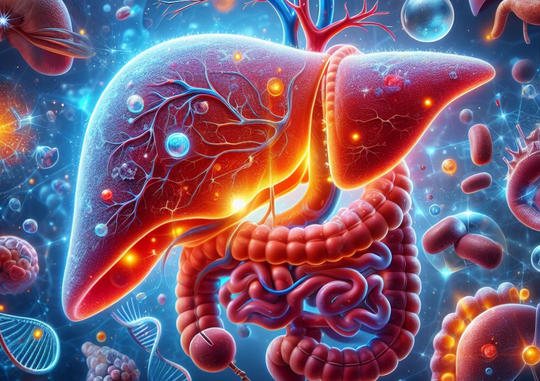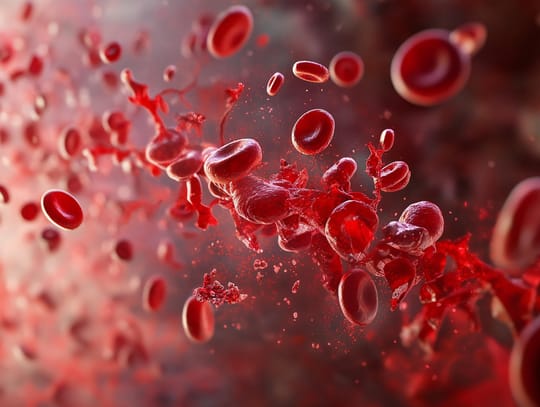Are we spending too much on red light therapy panels? Or could a simple $20 flashlight deliver the same results?
That’s what I wanted to find out. Because the science behind red light therapy—also known as photobiomodulation—is rock solid. We’re not talking fringe wellness theory here. We’re talking thousands of peer-reviewed studies showing its impact on wound healing, pain reduction, inflammation, collagen production, and more.
But at the end of the day, what is red light therapy? It’s just light. Specifically, light at therapeutic wavelengths. All these high-end panels emit large amounts of light at specific wavelengths.
So it got me thinking: What if we could get similar benefits from something as basic as a flashlight? You know, the ones we already have lying around the house?
Let’s break this down scientifically.
White Light vs. Red Light
Think back to your school science classes. Remember that white light, like daylight or the beam from your everyday flashlight, comprises a full spectrum: blues, greens, yellows, and reds… It’s all in there.
However, therapeutic red light lives in a particular range: mostly around 660nm in the visible red spectrum and 850nm in the near-infrared. These are the wavelengths the body responds to.
So the big question is: How much therapeutic red light is emitted from household flashlights, reading lamps, or spotlights, and is it enough to reach a therapeutic dose?
To find out, I tested several common lights using a spectrometer—a tool that tells you precisely what wavelengths are emitted and how much power is behind them.
Test #1: The Pocket-Sized White LED Flashlight
I started with a basic pocket LED flashlight—nothing fancy—just a regular white LED torch, tested about an inch away from the spectrometer sensor.
As expected, the light emitted had a significant spike in the blue range, around 450 to 460 nanometers. Then it tapered off through the green, yellow, and orange ranges. But we’re only interested in one part: the 660nm red light.
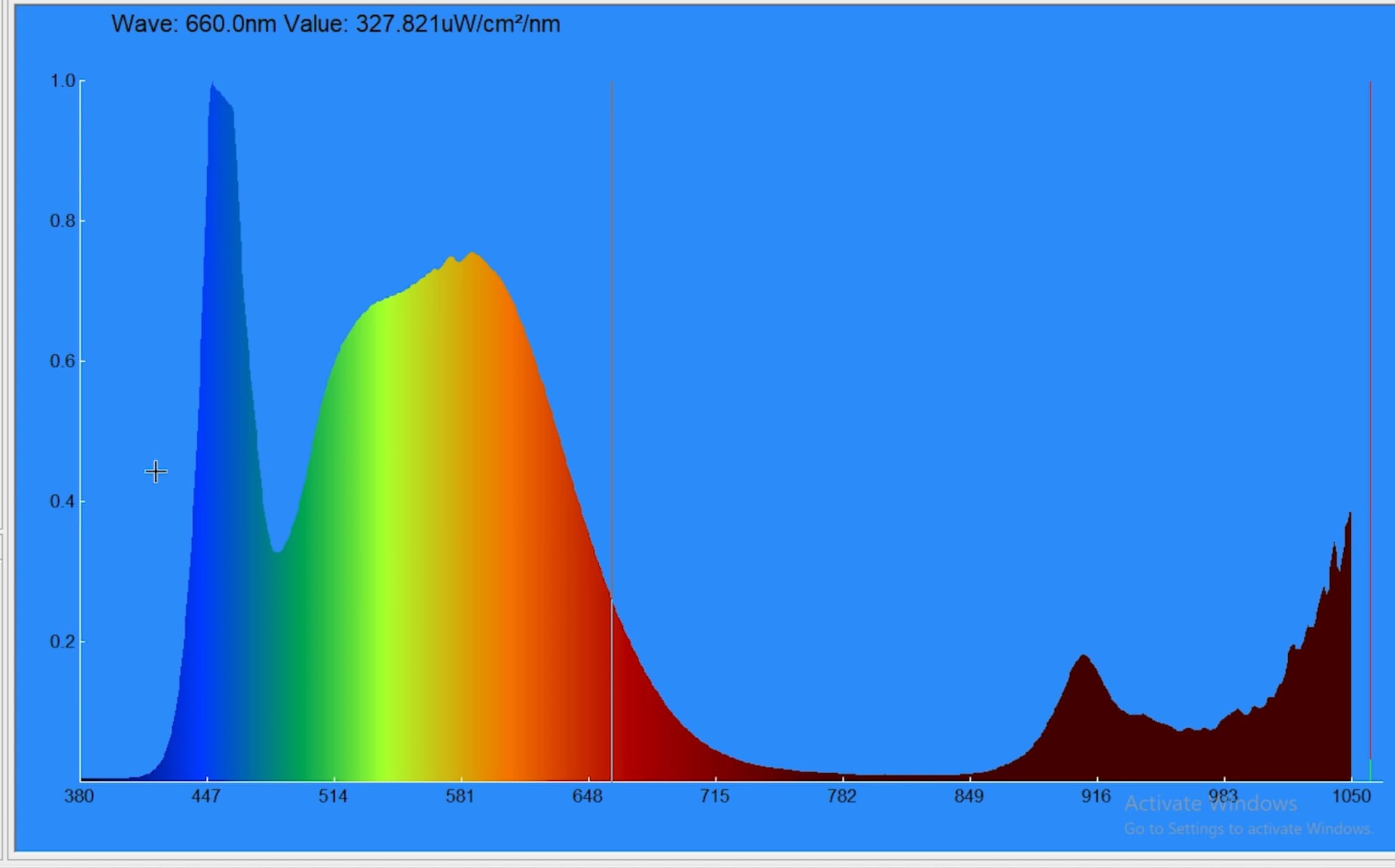
Total Irradiance vs. Targeted Output
The flashlight’s total irradiance—the full light output across all wavelengths—came in at 210 milliwatts/cm². Sounds high, right? For context, many high-end panels like MitoRed or Biomax put around 80 milliwatts/cm² at 6 inches.
But here’s the catch: that 210 milliwatts includes everything—blue, green, yellow, all of it. That number is meaningless unless we isolate the actual therapeutic red light.
So I zeroed in on 660nm; the reading was 0.3 milliwatts/cm².
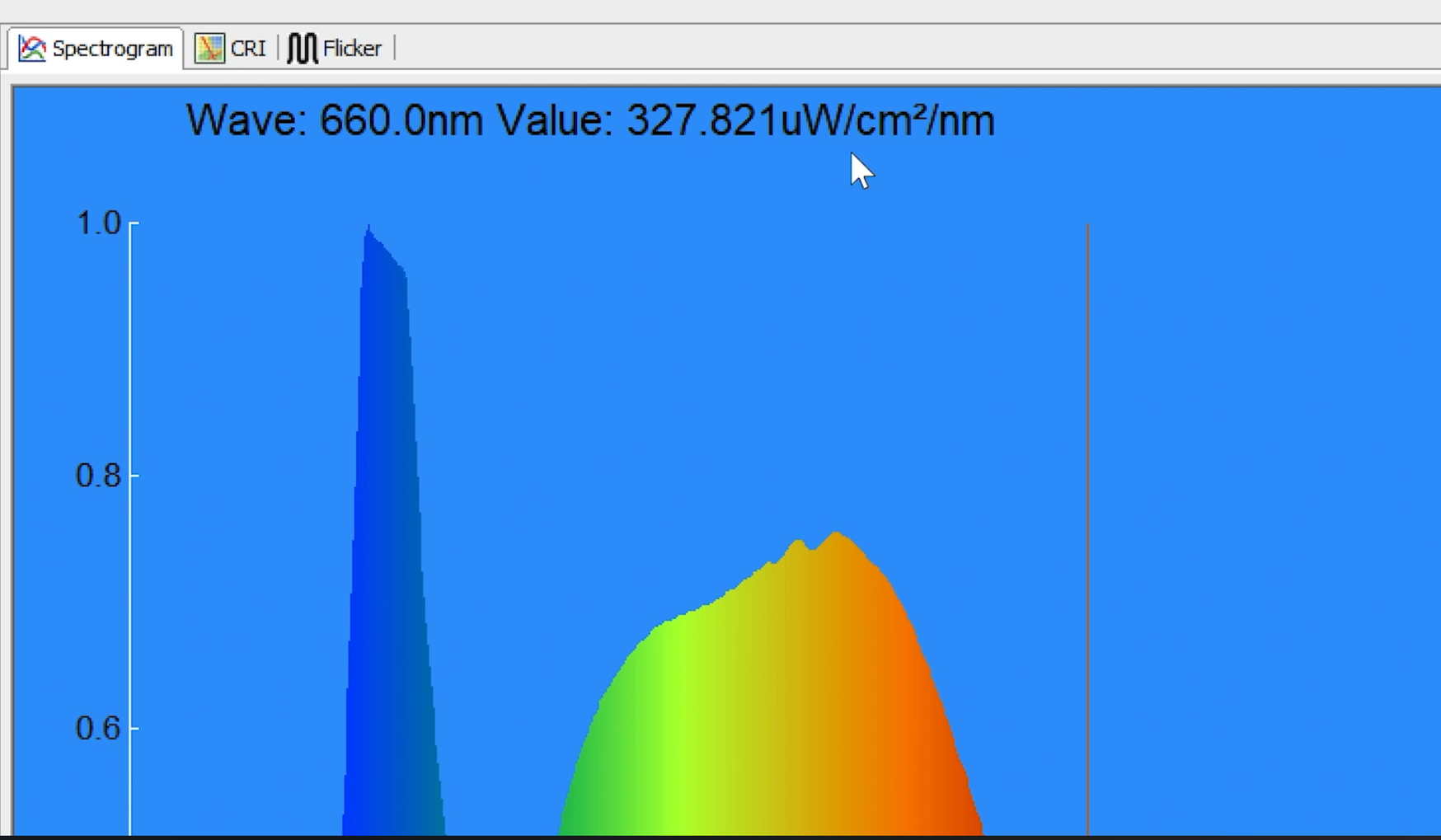
To put that into perspective, a decent red light panel will emit 5 to 10 times more power at that specific wavelength.
So yes, this flashlight emits some red light. But it’s surrounded by so much non-therapeutic light, especially blue, that it’s far from ideal. Treatment times would need to be extremely long to reach a therapeutic dose, and it’s questionable whether all that other light could even negate the benefit.
Interesting? Yes. Practical? Not really.
Test #2: Red Night Light by Hooga Health
Next up: a little red reading light. This one’s marketed for nighttime use—it emits a dim red glow and is excellent for inhibiting melatonin. I use it in my son’s room when we need light at night that won’t mess with sleep.
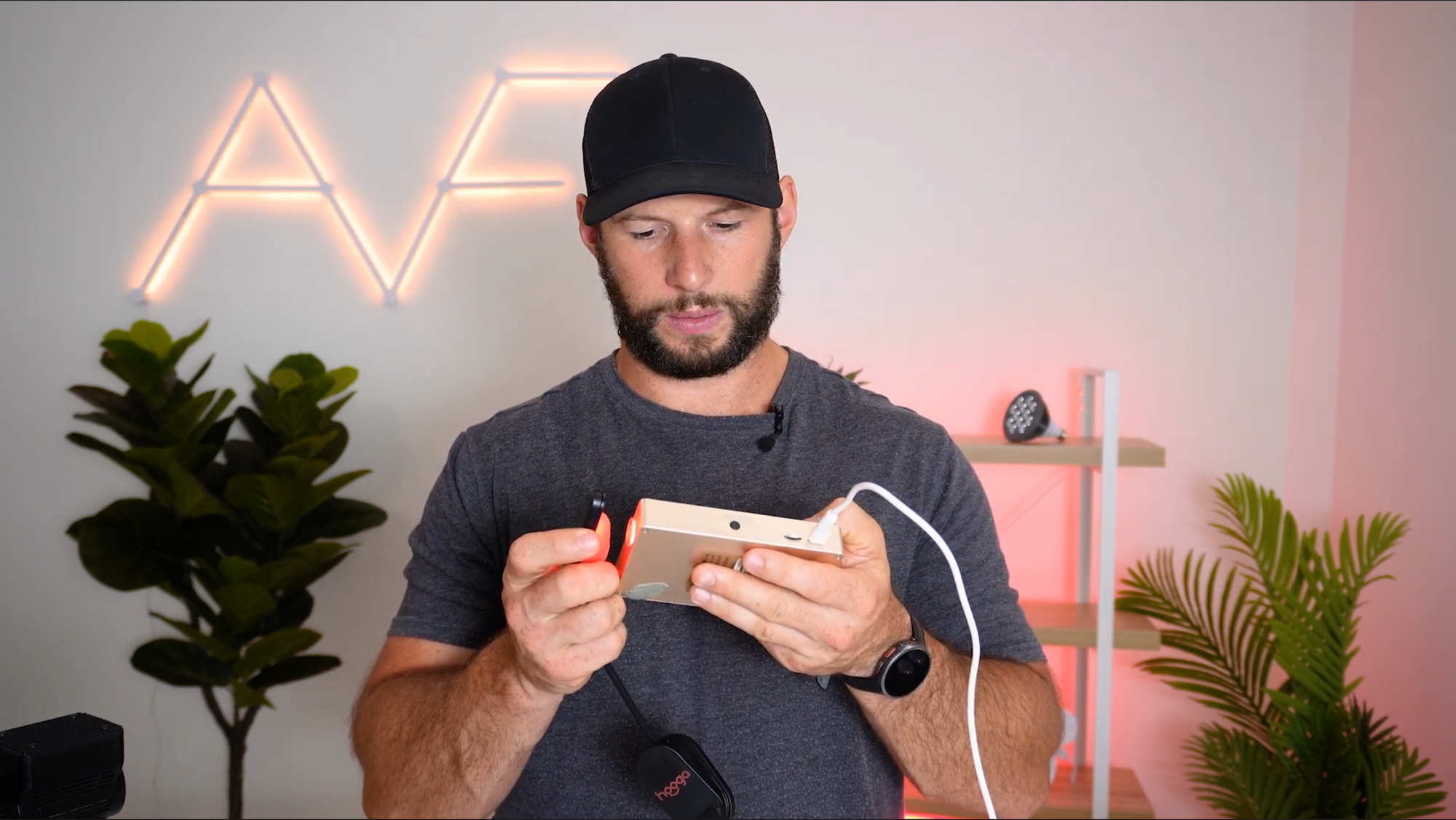
From the get-go, this was promising—it emitted only red light, no blue or green.
But the total power? Just 2.3 milliwatts/cm².
To deliver a therapeutic dose of 10 joules/cm², this little lamp would need to be used for around 83 minutes to treat a small surface area. Plus, its peak was at 634nm, not quite at the ideal 660.
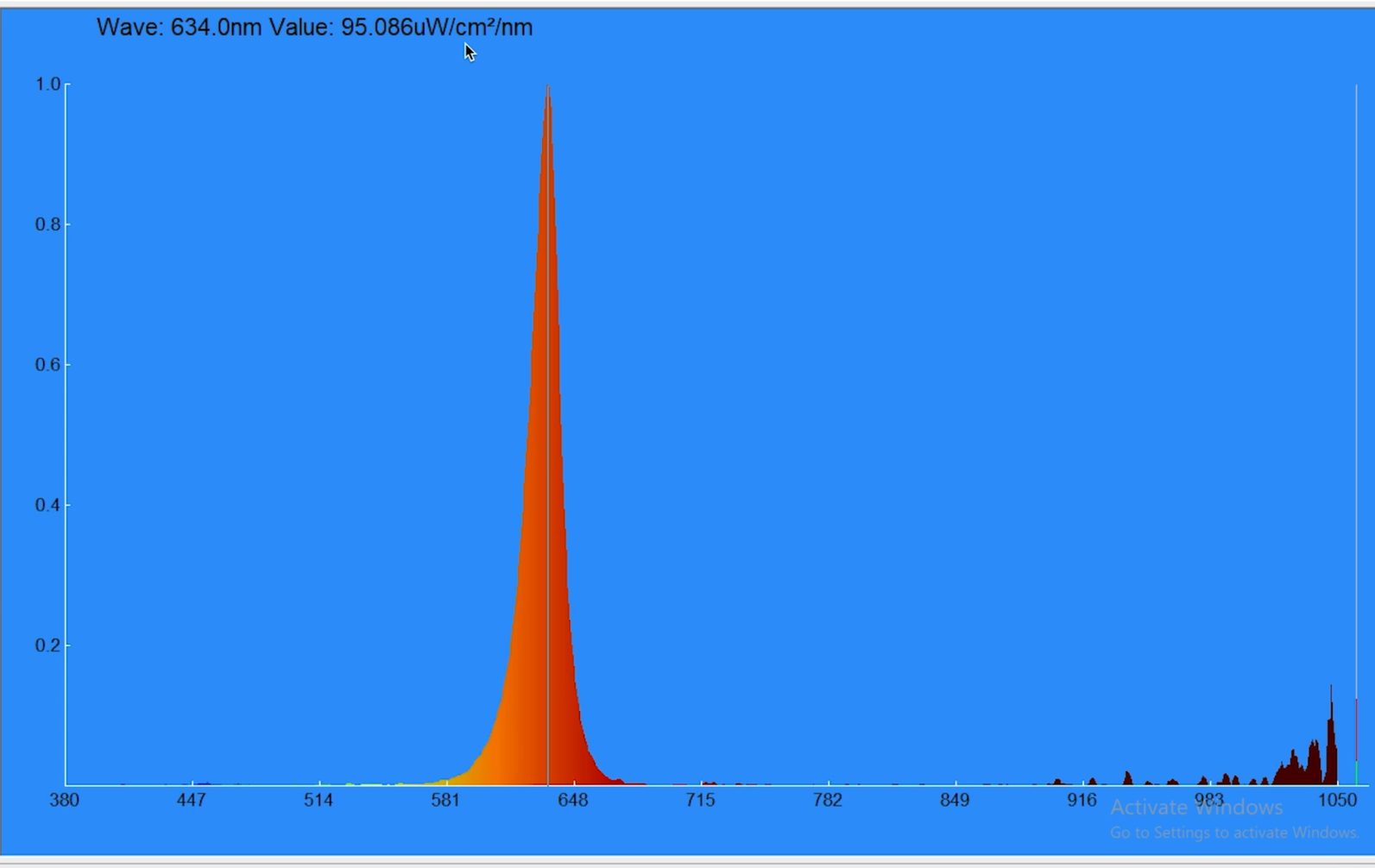
Even compared to the white flashlight, this light gave off less power in the therapeutic red range.
So again, helpful for circadian rhythm support, but not viable for actual red light therapy.
Test #3: The $250 Hunting Spotlight
Now things got more interesting. I pulled out my high-powered hunting spotlight. This beast is extremely bright, cost me around $250, and even comes with a red lens filter, typically used in hunting to avoid spooking animals.
The spotlight uses high-powered LEDs and has a built-in heatsink. Even holding it during testing, you could feel the heat coming off it. The LED sits a few inches back from the lens, so I tested the light output at that same distance.
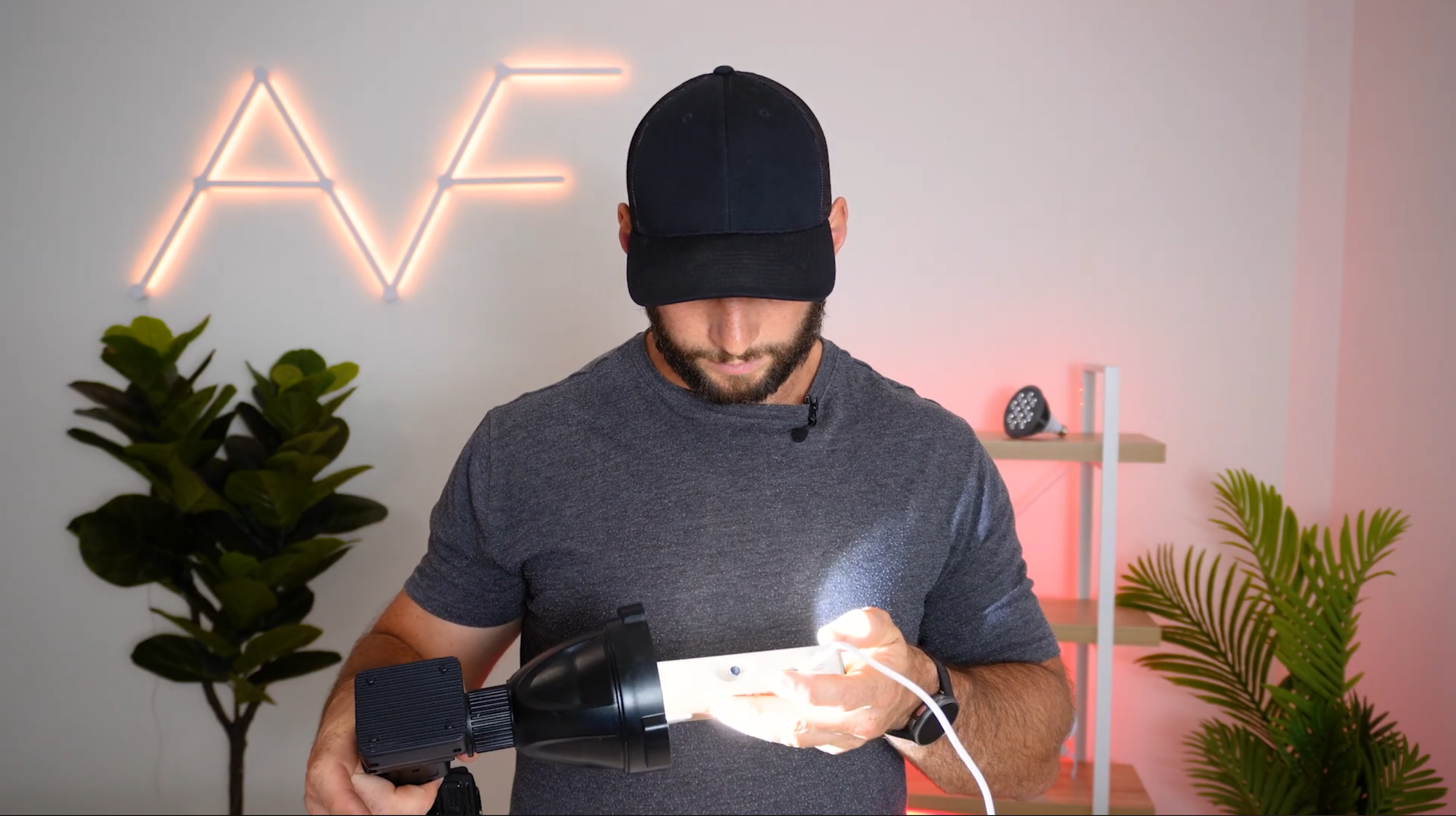
Raw Output: Impressive Numbers
Without the red filter, the spotlight's total power reading was 204 milliwatts/cm², similar to that of the white flashlight. However, the coverage was much larger, and the light was consistent across the lens. Up close to the actual LED, the number would be even higher.
At 660nm, the output was 262 microwatts/cm², slightly less than the flashlight. Again, that’s because all the other wavelengths dilute the red light.
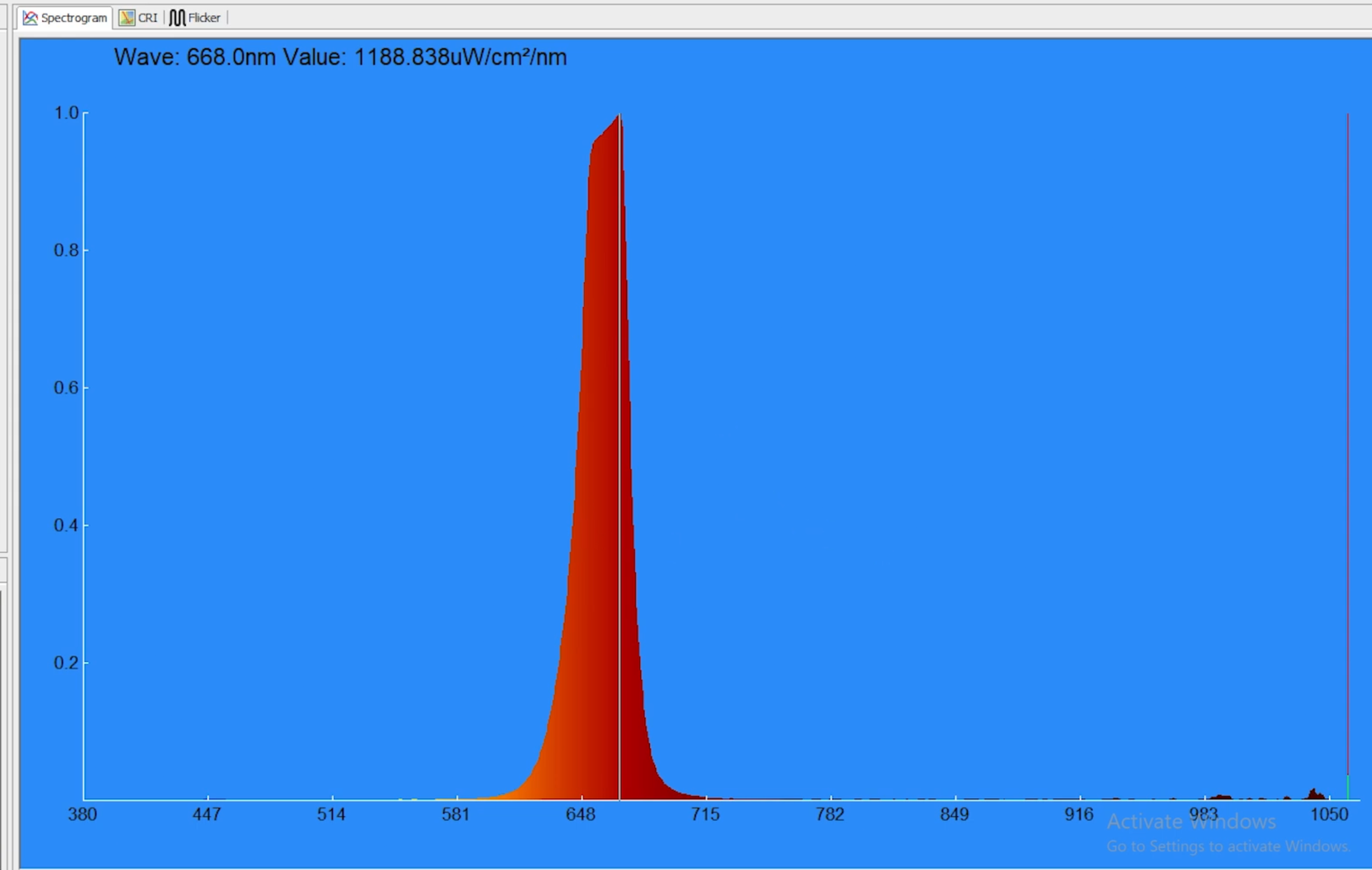
But then I added the red filter.
Test #4: Hunting Spotlight With Red Filter
This is where it got interesting.
With the red filter on, all the blue, green, and yellow lights vanished. What we saw was a clean spike from amber through deep red. The peak was 62onm, a less common but somewhat therapeutic red wavelength.
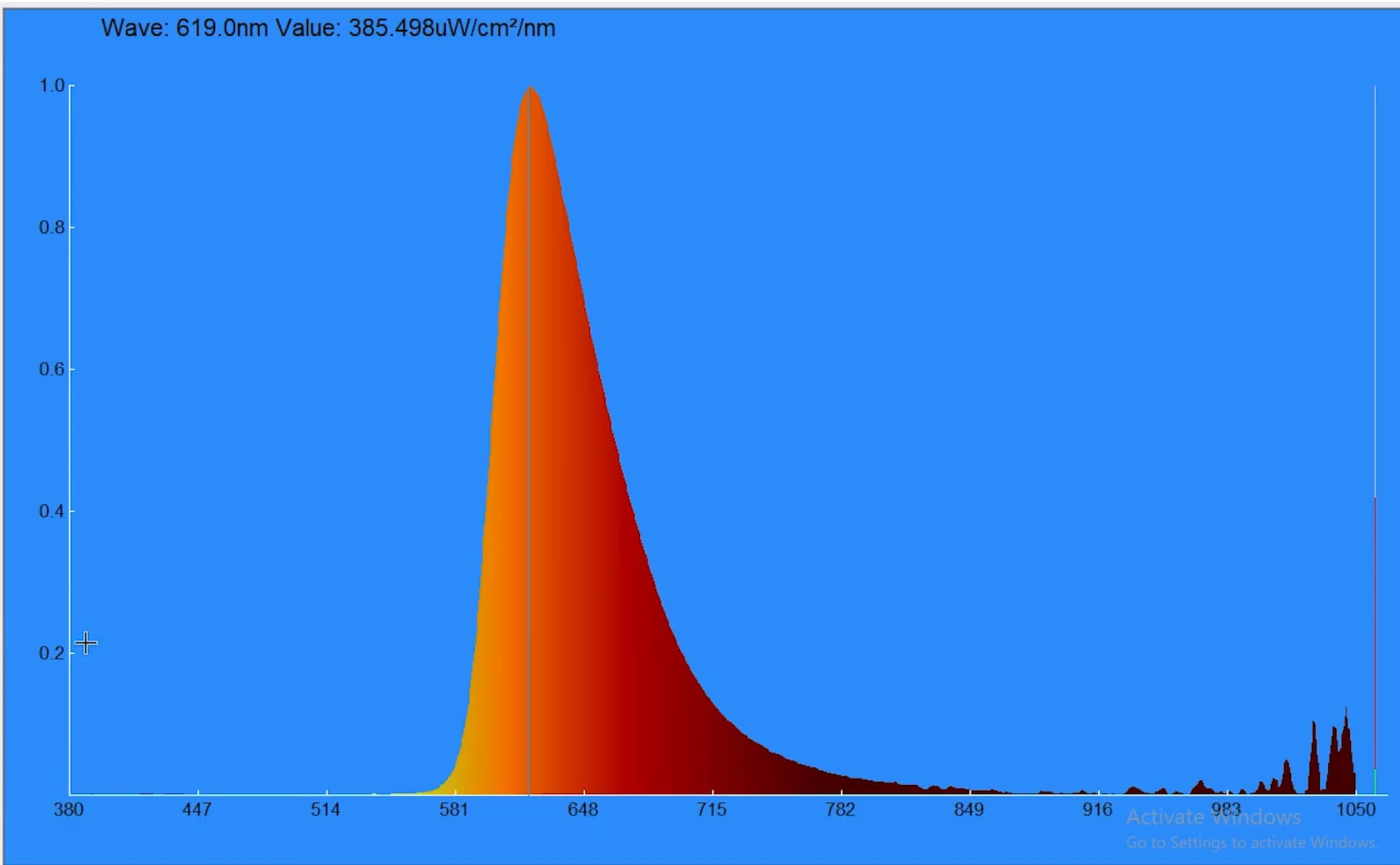
The energy output was strong at 630nm. At 660, we were getting about 50-60% of the peak. The red-dominant spectrum now delivers around 30 milliwatts/cm² of energy.
That’s a significant jump from before, when red light was only a small portion of a mixed spectrum. Now it was the majority.
Using that figure, if you wanted to deliver 10 joules/cm² for skin treatment, you’d need to use the spotlight for 8 to 10 minutes. Not bad, especially considering the large treatment area.
So technically, you could use this spotlight with the red filter for basic surface-level therapy.
But should you?
Why Purpose-Built Devices Still Win
Even though the filtered spotlight performed decently, it still falls short of what dedicated therapy devices can do.
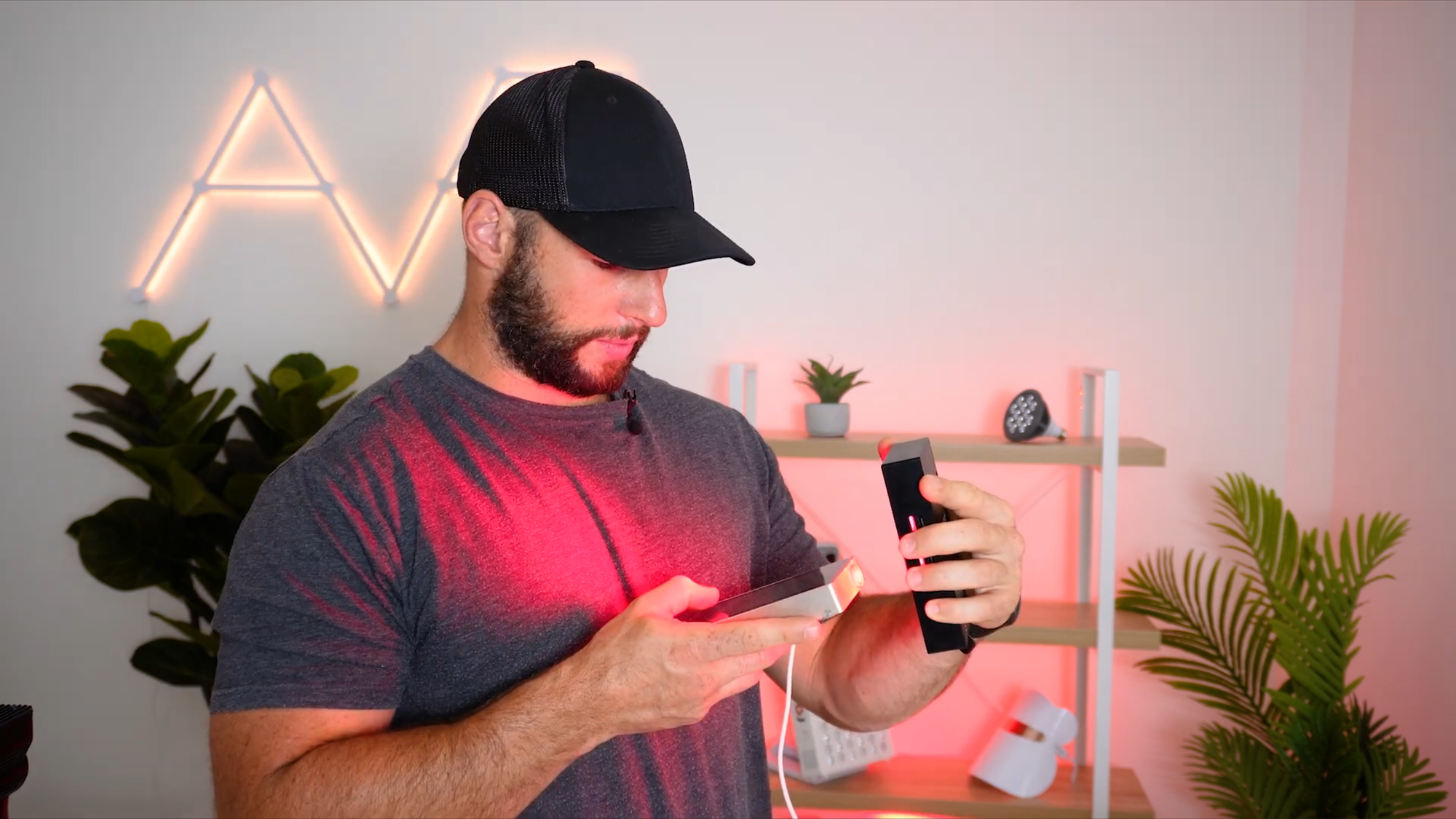
Take the Infraredi Micro, a small, handheld red light therapy device purpose-built for therapeutic use.
I tested this one from a few inches away. Its total energy output was 42 milliwatts/cm², with a peak at 669nm—right in the heart of the therapeutic window.
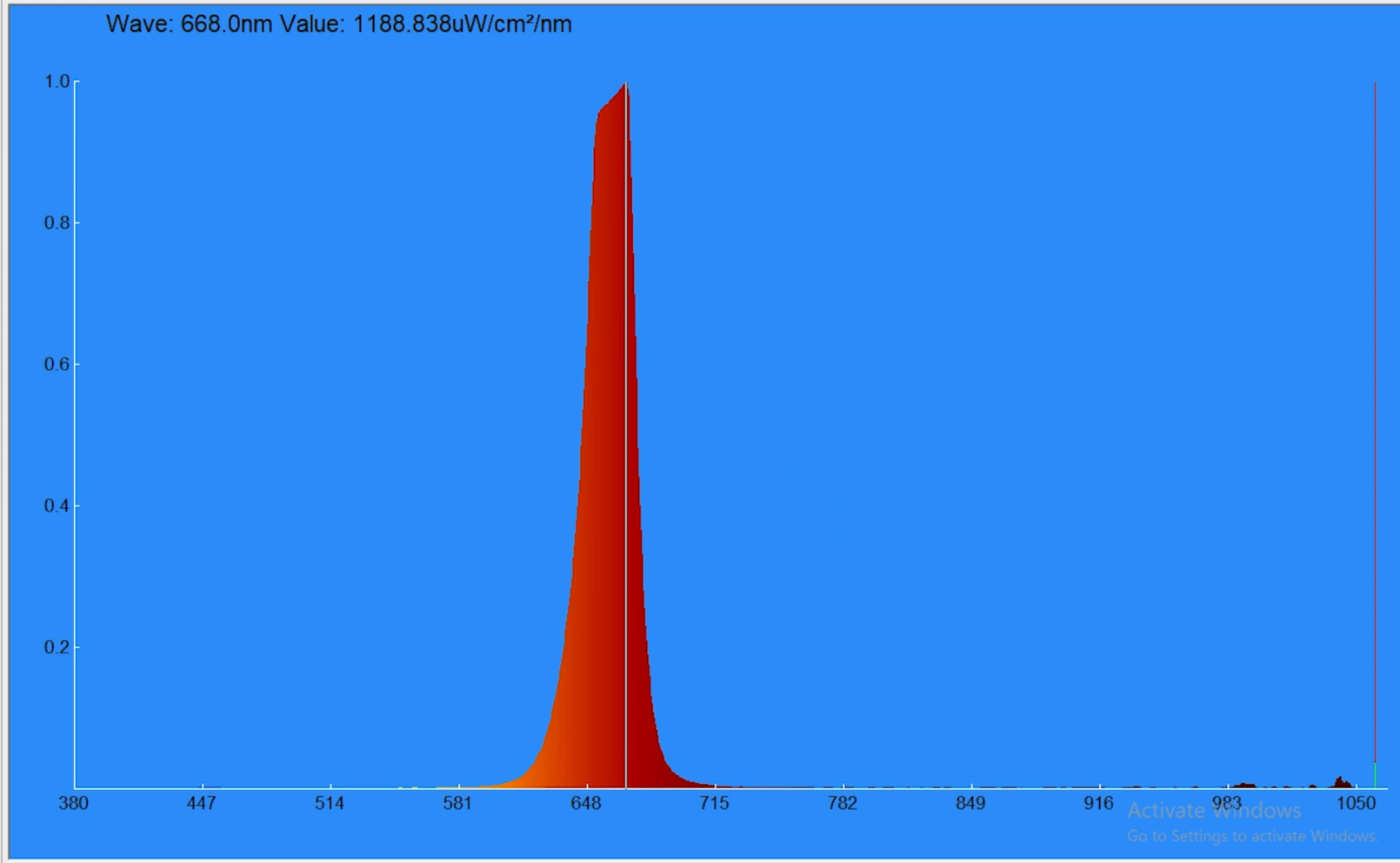
The output was consistently strong from 650 to 670 nm—far better than anything I measured from the household lights. It covers a much larger area and is designed for even, targeted light delivery.
And here’s the kicker: these handheld therapy devices aren’t all that expensive anymore. Many are now priced quite affordably, and they’re built to do one job well—deliver therapeutic red and near-infrared light.
Final Verdict: Can a Flashlight Replace Red Light Therapy?
Technically? Maybe—if you’re using a high-powered spotlight with a proper red filter and are willing to sit there for 10+ minutes at a time for one small area. And even then, results won’t match what you’d get with a real red light therapy device.
Most regular flashlights and night lights don’t produce enough energy in the correct wavelengths. You might get a hint of benefit, but not the consistent therapeutic outcomes shown in clinical research.
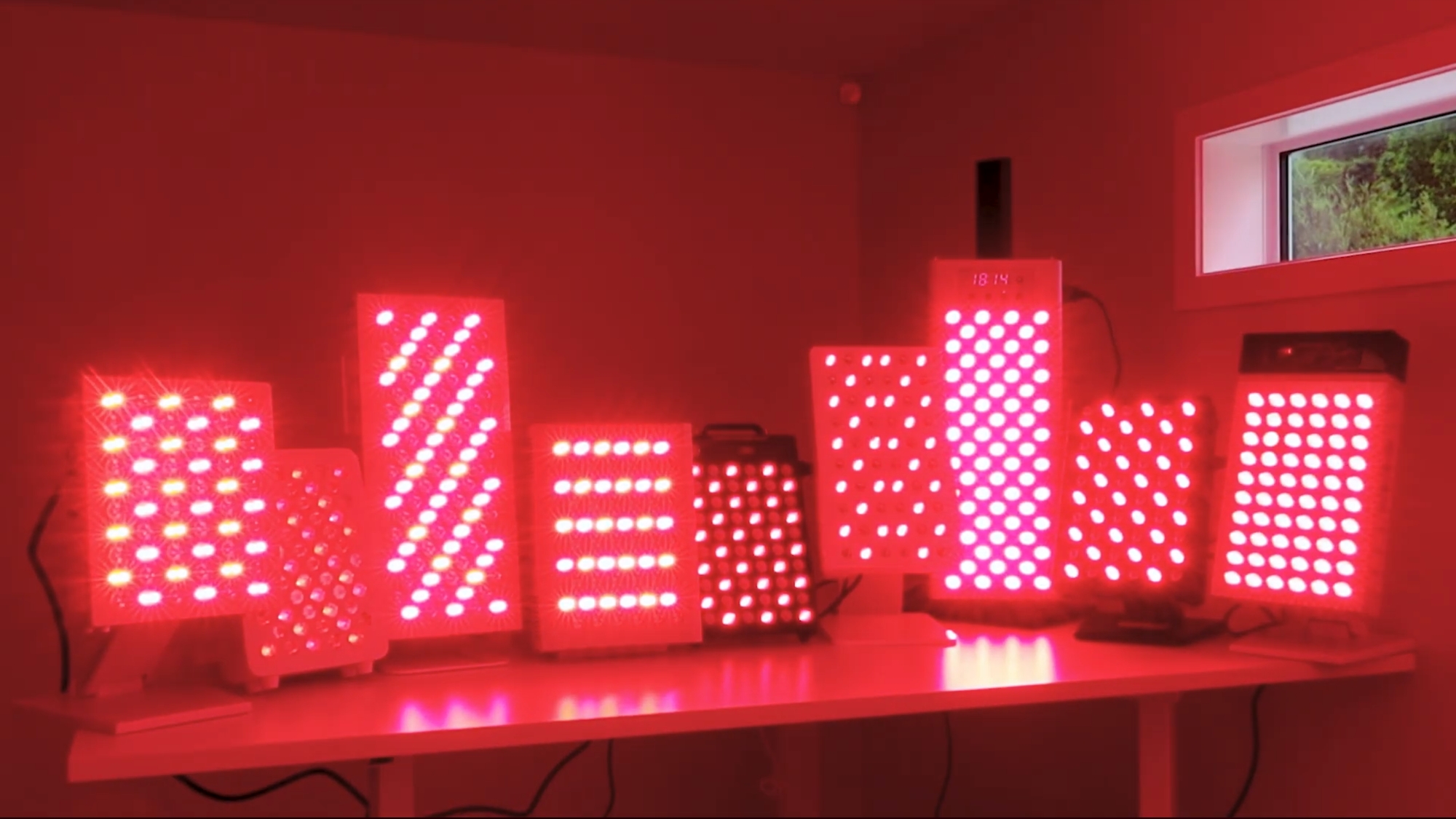
If you’re serious about red light therapy, save yourself the frustration. Invest in a proper device designed for the job. And if cost is a concern, start small. Handheld options like the Infraredi Micro offer impressive performance without the steep price tag of full-size panels.
Because when it comes to your health, cutting corners rarely pays off.
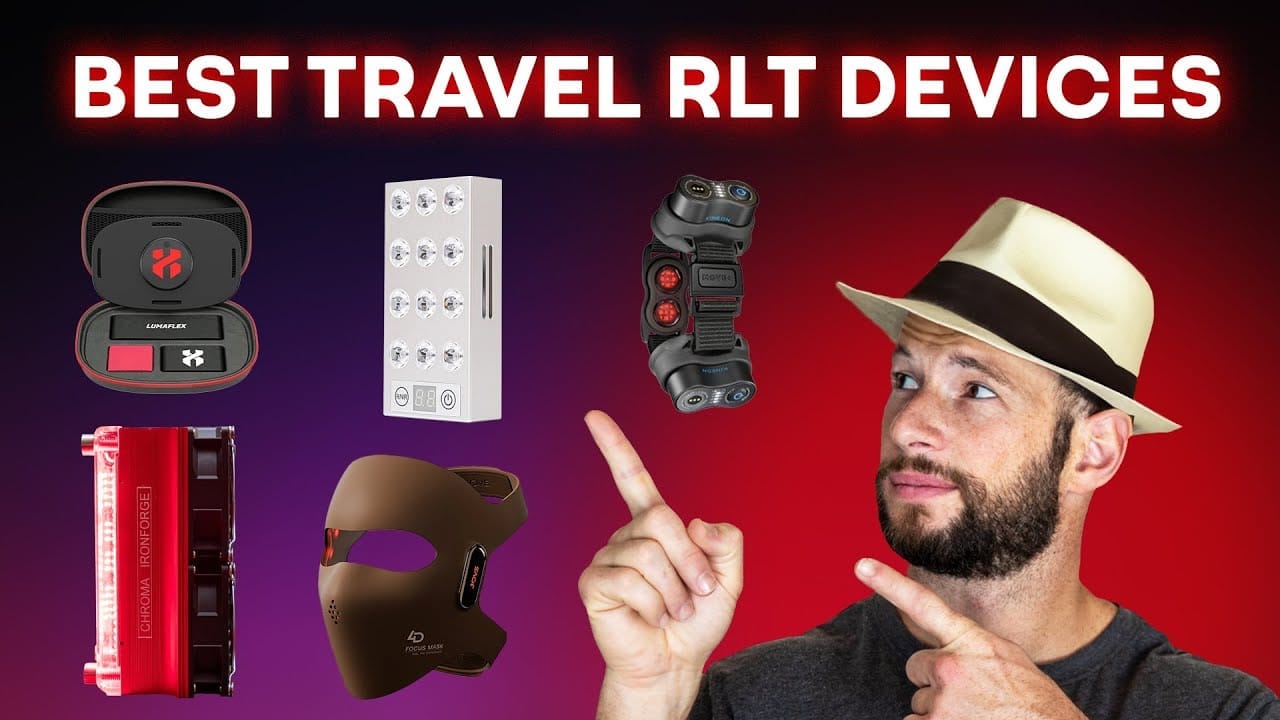
Items Mentioned In This Article:
✅ You can get an Infraredi Micro by using code ALEX for a 5% discount and the following link: https://aferg.co/infraredi - other Infraredi panels can also be bought through that link
Found This Interesting? Look At These Articles:
⭐ Red Light Therapy Dosing: Why It's Complicated!
⭐ How to Choose A Red Light Therapy Device: Complete Guide
⭐ The Best Budget-Friendly Red Light Therapy Panel Review
⭐ Red Light Therapy Wavelengths Benefits: The Ultimate Guide
Consider These Reviews, As Well:
⭐ The Best Valued Red Light Therapy Panel 2025! The Ultimate Guide
⭐ Sunlight Vs Red Light Therapy: Exciting Experiment!
⭐ Top 12 Lowest EMF Panels Compared - Minimize EMF Exposure!
⭐ I Refused $10,000 to Promote a Red Light Brand
Alex's Bio
This blog post was written by Alex Fergus. Alex is a ISSN Sports Nutrition Specialist, Fitness Professional and certified Superhuman Coach who continues to expand his knowledge base and help people across the world with their health and wellness. Alex is recognized as the National Record Holder in Powerlifting and Indoor Rowing and has earned the title of the Australian National Natural Bodybuilding Champion. Having worked as a health coach and personal trainer for over a decade, Alex now researches all things health and wellness and shares his findings on this blog.


